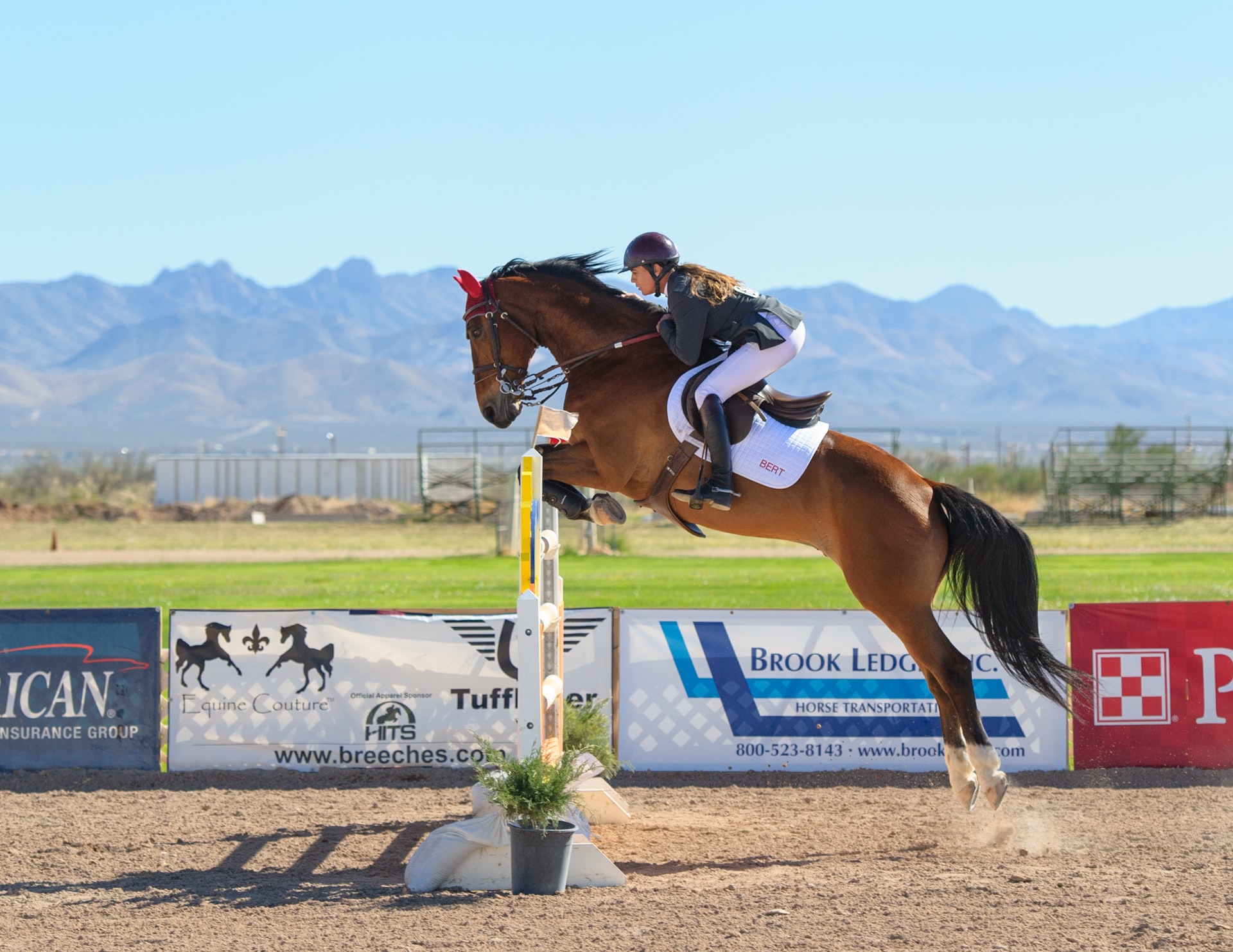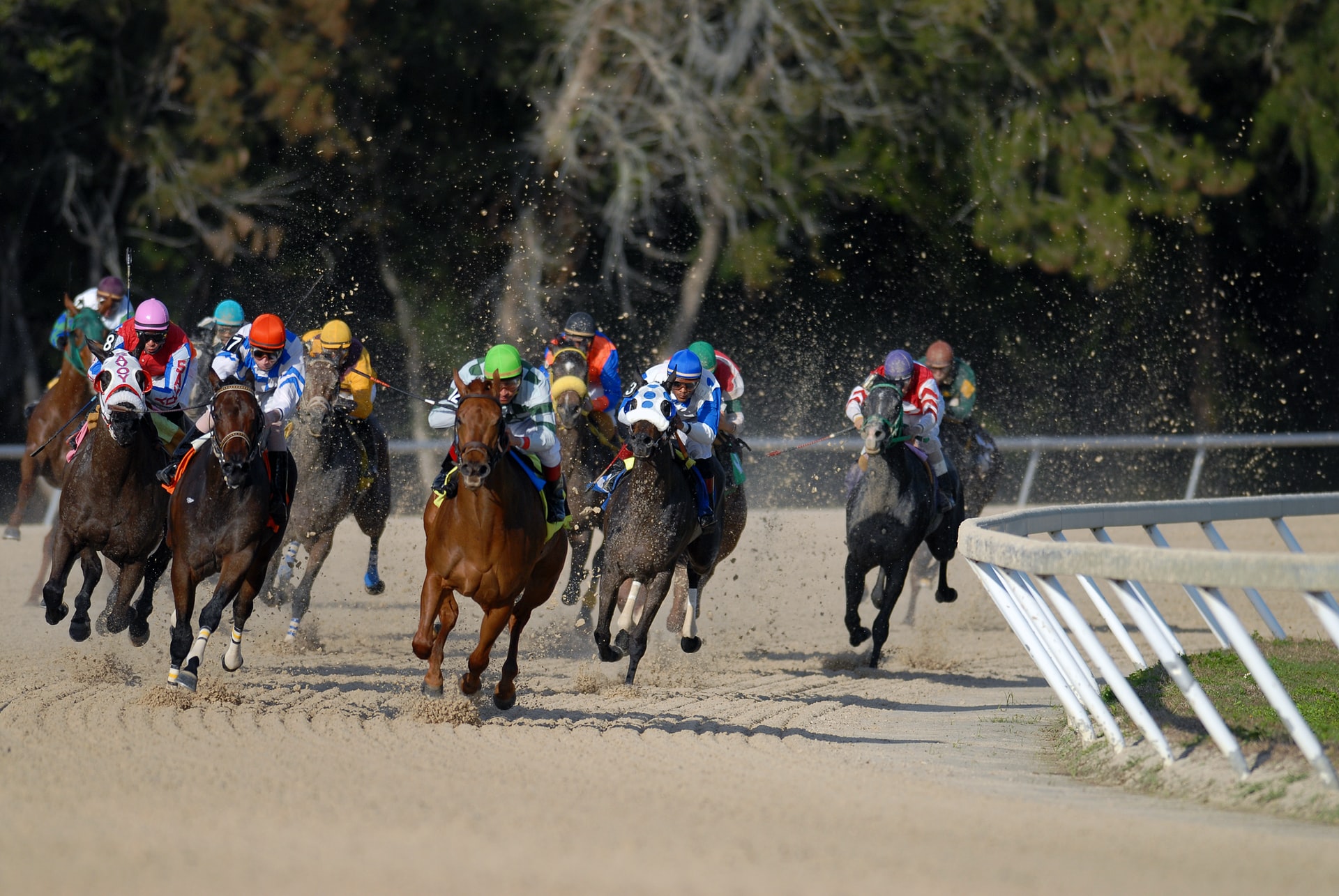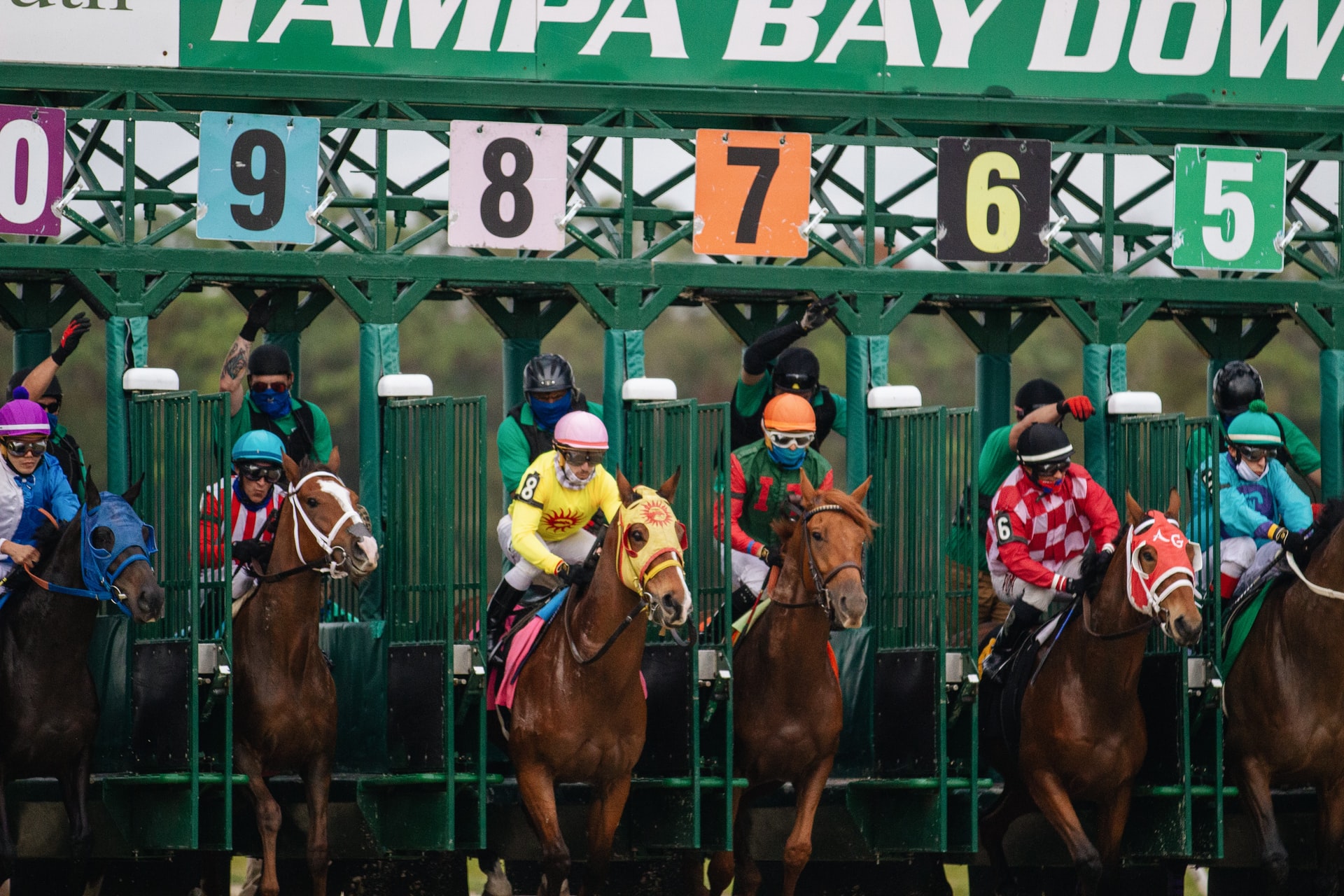
Equestrian is a game of horse riding in which the riders partake in any of the three disciplines. Horse riding is a hazardous game since, in such a case that a rider tumbles from the horse because of his slip-up or another explanation, he might get injured. The rider likewise needs solace while sitting on the horse with the goal that he can without much of a stretch mount on it and ride it. SO he wants solace and security hardware.
In this section, we will examine the gear utilized in Equestrian.
Saddle
Any seat that fits the horse and doesn’t confine its development is all set. Bosom collars can likewise be utilized to guarantee that the seat stays in its place in harsh territory.
Head Gear
It is a clothing component which each rider will undoubtedly wear for security reasons.
Bit
It is a material put in a horse’s mouth situated on its head through a headstall.
Breeches
Breaks are a bunch of pants worn by the rider during the occasion alongside boots and coats.
horses are considered as huge creatures however they truly do require legitimate consideration, care, and customary collaboration. They are living creatures and they truly do get feelings. Dealing with horses, be it loading up them for quite a while or keeping them, requires responsibility and cash.
Making Stalls for Horses
While making slows down for the horses, ensure that their slows down are more noteworthy than 3.6m by 3.6m and they ought to be let out every day for work out. They are taken care of two times per day. It ought to be seen that the horse’s food is kept in barrels off the ground to forestall ingestion of sand which might cause sand colic.
Fences and Gates
Guarantee that the wall and doors are in appropriate condition and make an effort not to utilize point wires as the creatures might get found out in it and get injured. To board the horse, they need to look at what is accessible at that occurrence. For this situation, they can choose full time loading up that comprises the relative multitude of necessities and making them slow down.
Riders ought to likewise cautiously see every one of the administrations and additional items accessible at that example. They are likewise expected to beware of their horses at normal spans so they can screen their great conditions. They ought to have close holding with the horse so they can set them up for the large occasion.
Part Boarding
To some degree boarding, the horse doesn’t have a place with the riders. They pay a few sum as a trade-off for its utilization. This is the most ideal choice for the individuals who can’t bear to possess a horse. As they save money, they get to invest less energy with their horse.
The fundamental prerequisite for the players of Equestrian is their capability to remain on their horse. The whole game depends on the rider’s holding the horse. From dealing with the horses to keep them glad and dynamic to act on occasion, everything should be dealt with.
Alignment of Rider’s Body
While sitting on the horse, the riders are encouraged to keep their body adjusted. It should remain loose and feel good while sitting on seat bones staying away from utilization of thighs to hold the horse. The rider ought to keep quiet and ought not give indications of tension and anxiety.
While remaining on the horse, it is vital to keep the chest area in a similar alignment as it was during the sitting position. So, the body ought to be adjusted from head through hips.
Riding without Stirrups
Riding without stirrups helps in creating body offset alongside fortifying the lower leg. This activity assists the rider with normally sitting further into the seat fixating on the horse’s back. It additionally assists the rider with normally inclining towards the sides when he is on the seat.
The vibe of a horse’s moving mood can likewise be created by posting jobs. The riders can lift their body up from their seat simply by utilizing their horse’s walk by posting without stirrups.
Five-Five-Five Exercise
Five-Five-Five is one more exercise which gives the rider the ability to pay notice to where the horse’s hooves are. This should be possible by feeling the development through the horse’s body as it moves. Here the rider needs to sit on the seat for five steps as the horse strolls, before posting for the following five steps.
Toward the finish of the initial five walks, the rider and horse represent five additional steps. This activity ought to be drilled every day so that both the rider and horse are OK with it. Rehearsing these three alignments of minutes make the riders very much aware of the cadence of the horse’s step.
When the rider is almost certain of being on the seat, the last advance is running all around. It starts with a jog and coordinates the horse in setting up an enormous circle. In the wake of shaping the circle, fix the circle significantly and direct the horse into a run. As the circle fixes, drop inside the stirrup and keep up with the equilibrium. When the rider feels its hang, they can without much of a stretch shift the bearing and practice.
Before to Mounting
Before mounting a horse, ensure that you are mounting smoothly without harming the horse with your leg onto its backside or seat. Adjust yourself accurately over the seat and begin riding with a slight touch over the rein. Accomplish seriously running or running as opposed to trotting or hacking. Rather than fake guides (harvest or spikes), utilize regular guides (hand, legs, weight and voice) to give intelligible prompts to your horse on developments.
Mounting
Start with a tad of warm up then, at that point, go for mounting. This is on the grounds that, cool muscles of the horse require continuous get ready for smooth working. Accordingly, before lope/lope simply move alongside your horse in both the bearings for running or jogging.
Various styles of mounting have various steps however all have a few normal steps that should be followed:
- Take your horse to an open area and ensure your horse is at fair separation from different horses.
- Really take a look at the snugness of clinch/girth.
- Rein ought to be uniformly circulated over the horse to give a firm command over him. A decent rein can help you stand firm on your horse in a consistent situation, so it won’t move while you ride.
- In the event that the horse is feeling modest or bolted, his eyes and ears can speak with you. So prior to riding, investigate his face for such signs.
- Utilize a mounting block which will help in diminishing the strain riding a horse while you ride on it.
Western Style of Riding
In the event that you wish to ride the horse in western style, follow the means given beneath:
- Remain on the left hand side of the horse and start equitably circulating the rein through your hands over his neck.
- Presently hold the reins firmly in your left hand, confining any further development of the horse in forward course prior to mounting and subsequent to mounting it very well may be delivered a little.
- Use your fringe vision to watch out for the top of your horse and face either in a similar heading or to the side of his face.
- Presently position your left hand before the shrivels by holding firmly the seat if conceivable.
- Use your right hand to hold the stirrup and spot your left foot in it.
- Hold the seat horn firmly and push up off the ground with your right leg.
- For yourself in a standing position and set your entire load on the left stirrup.
- Ignore the right leg of the seat without contacting the horse and sit over it delicately.
- Position your right leg into the right stirrup and change the seat alongside reins.
English Style Mounting
On the off chance that you will ride your horse in English style, utilize a mounting block and follow these underneath steps.
- Keep the stirrup irons run up while mounting on a horse saddle with an English seat.
- Place the reins over the top of your horse.
- Hold the reins with your left hand by remaining on the left hand side of the horse. Reins ought to be equally disseminated and ought to be short to the point of standing firm on the horse in a consistent situation.
- Face towards the forequarters and at the shrivels, handle your horse’s mane with your left hand.
- Presently it’s an ideal opportunity to turn the iron stirrup towards you in a clockwise heading with your right hand.
- Place your left foot into the stirrup and right hand on the off side of the seat.
- Presently incline somewhat forward and mount the horse with your right foot making a circular segment over his seat without contacting.
- Presently plunk down delicately on the seat by changing your right foot into the stirrup and change the reins with your hands.
Dismounting
Prior to landing, consistently ensure that your arrival region is liberated from any deterrents. The people who are utilizing western style of horse riding can utilize any of the accompanying two dismounting techniques.
- Without utilizing your left stirrup, tenderly slide down from the horse.
- Leave your foot in the left stirrup and step down from the horse.
- The size of the rider chooses the technique for sliding down from the horse. For instance, an individual having little tallness should utilize the main technique rather than second.
- On the off chance that you are an English rider, without utilizing the left stirrup slide down from the horse or probably do the vaulting. Like western styles, riders don’t step aerobically from the horse straightforwardly.
Position of Body Parts while Riding
Assuming you figure out how to mount and descend from the horse, that won’t help you in playing equestrian. Finding out with regards to different body positions is likewise similarly significant. Underneath we have examined some fundamental places of your body while sitting on the horse.
Head − Do not shift your head concerning your shoulders, rather keep it straight and keep your eyes on the objective. Put the load out of your heel by stooping forward and keep your jaw in up position.
Shoulders − As soon as you position yourself on the seat, attempt to keep up with your two shoulders at the same level. If not, they might show that your body weight isn’t adjusted halfway. Assuming you incline toward a path, it will make your horse inclined that way as well.
Back − Keep your back consistently in an upward situation concerning your base. Try not to keep it inflexible, else it will influence your presentation.
Stomach and Arms − Your stomach ought to be level and arms should hang normally not inflexibly. Keep them delicate and loose. Thus, your hand will move normally when the horse makes any development.
Seat − Keep your hips and pelvis in a loosened up position since they are the genuine safeguards. Attempt to circulate your body weight equitably all around the seat. Your thighs ought to stay in contact with the seat.
Legs − Through your legs, you can really speak with the horse adequately. Legs can adjust your chest area in a harmonious position over the seat. Stirrups ought to be of more limited stature than saddle with the goal that your legs and lower legs can viably go about as safeguards.
Foot − Most of your body weight is done by your impact point. Along these lines, appropriate situating of the wad of your foot over the stirrup decides how you will utilize your legs. The place of your feet ought to be almost corresponding with the side of the horse.
Altering Bearing
To alter the bearing, you should utilize your hands, legs and the reins successfully. How about we examine a portion of the rudiments.
Turn right/left
How about we start with a strategy for turning right. Turning left will follow the comparable method with inverse guides. Set more strain on the right hand side of the stirrup however don’t hang over the horse. Then, at that point, step the rein minimal back. Presently there is an undertaking to turn the horse toward a path you need to. For that you first turn your head, then, at that point, shoulders and afterward hips, so your horse can detect the development through you.
As the horse begins turning, knock his bigness somewhat with your outside legs so the horse will pivot all the more firmly. Here the external leg will control the impulsion and within leg will control the twisting of his ribcage.
Riding a Circle
Making a circle requires the twisting of the horse at four places and the rider ought to have the option to see the horse’s inside eye all around the way. The means for circumnavigating are as per the following:
- At the point when you begin to move around a circle, your horse will follow his nose and will search for where he is going.
- Somewhat tip his nose to the curve of the circle with your inside rein.
- Use your outside leg to control the development of the horse around the circle.
- Your inside leg can make him move around the circular segment by applying tension on his ribcage and spine in a similar bearing. Knock him at his circumference in the middle in the event that he doesn’t react.
- Pull your inside rein somewhat up off his mane so the shoulder of your horse will stay in an upstanding position.
Rules for equestrian are chosen by Federation Equestrian International. How about we realize the guidelines connecting with different parts of Equestrian.
- Perseverance has different stages fluctuating from 20-40km each. The occasion keeps going from one to five days. Stages rely upon the distance that will be covered.
- After each stage, there is an obligatory break or rest time for taking care of the horse. Veterinary reviews of the taking part horses are additionally led during this time.
- Time is the main component that decides the champ of the game. After each stage, players are given a period card referencing and recording their timings. The initial ten players who complete the end goal in best conditions are compensated by the getting sorted out advisory group.
- The players should wear defensive, safely affixed headgear all through the game while on the horse. Security stirrups are impulse and keeping in mind that riding, every one of the players should wear footwear with impact points of 12mm or more.
- Every one of the riders should be in their separate outfits. Shorts and shoes are not permitted.
- During the hopping occasion, all insights about the occasion alongside one duplicate should be posted at the entry of the field somewhere around 30 minutes before the occasion. All boundaries to be crossed must be numbered in the request they should be hopped.
- Two banners are utilized for stamping. All the mandatory defining moments are set apart with a warning on the right side and a white banner on the left. Assuming that a rider attempts to hop the boundaries with their head gear mistakenly affixed, then, at that point, they will be straightforwardly killed.
- In dressage, every one of the standards connected with the punishments and shortcomings are extremely severe and the rider can be straightforwardly precluded in the event that the infractions made are considered not kidding. In any case, the riders can further develop their presentation by paying attention to the appointed authority’s remarks.

